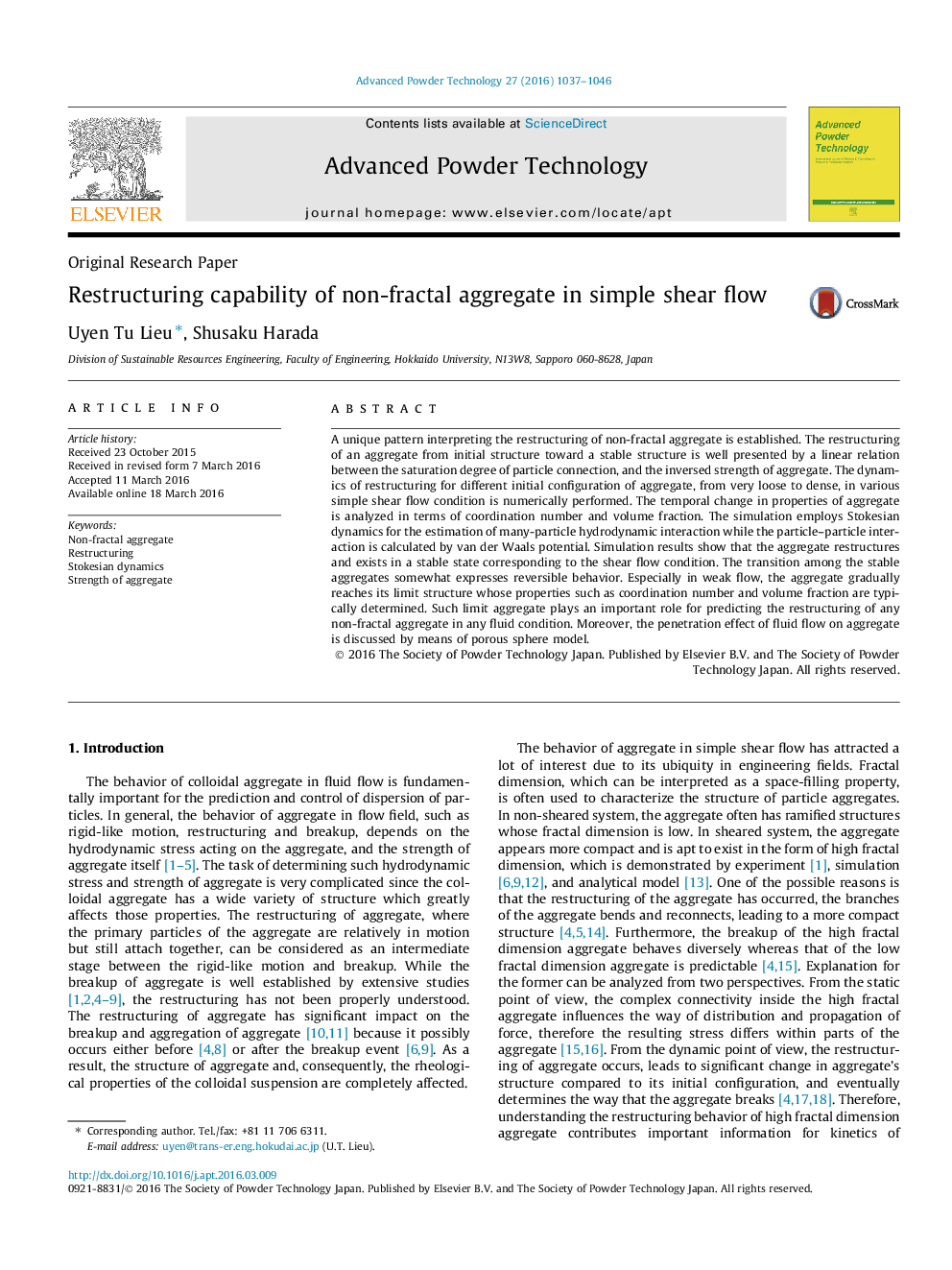| Article ID | Journal | Published Year | Pages | File Type |
|---|---|---|---|---|
| 143888 | Advanced Powder Technology | 2016 | 10 Pages |
•Non-fractal aggregates restructure in simple shear flow into stable structures.•A relation of the connectivity degree and strength of aggregate is established.•The stable structure of the aggregate in weak flow is typically determined.•The prediction of any non-fractal aggregate in simple shear flow is possible.•Structure of aggregate slightly affects the penetration of fluid flow on aggregate.
A unique pattern interpreting the restructuring of non-fractal aggregate is established. The restructuring of an aggregate from initial structure toward a stable structure is well presented by a linear relation between the saturation degree of particle connection, and the inversed strength of aggregate. The dynamics of restructuring for different initial configuration of aggregate, from very loose to dense, in various simple shear flow condition is numerically performed. The temporal change in properties of aggregate is analyzed in terms of coordination number and volume fraction. The simulation employs Stokesian dynamics for the estimation of many-particle hydrodynamic interaction while the particle–particle interaction is calculated by van der Waals potential. Simulation results show that the aggregate restructures and exists in a stable state corresponding to the shear flow condition. The transition among the stable aggregates somewhat expresses reversible behavior. Especially in weak flow, the aggregate gradually reaches its limit structure whose properties such as coordination number and volume fraction are typically determined. Such limit aggregate plays an important role for predicting the restructuring of any non-fractal aggregate in any fluid condition. Moreover, the penetration effect of fluid flow on aggregate is discussed by means of porous sphere model.
Graphical abstractFigure optionsDownload full-size imageDownload as PowerPoint slide
